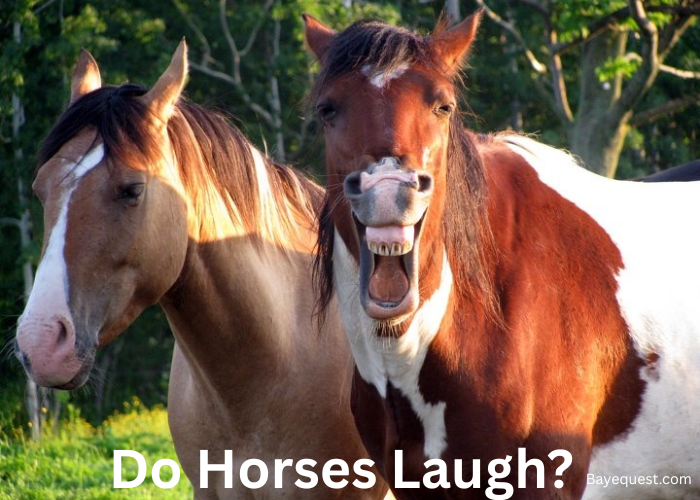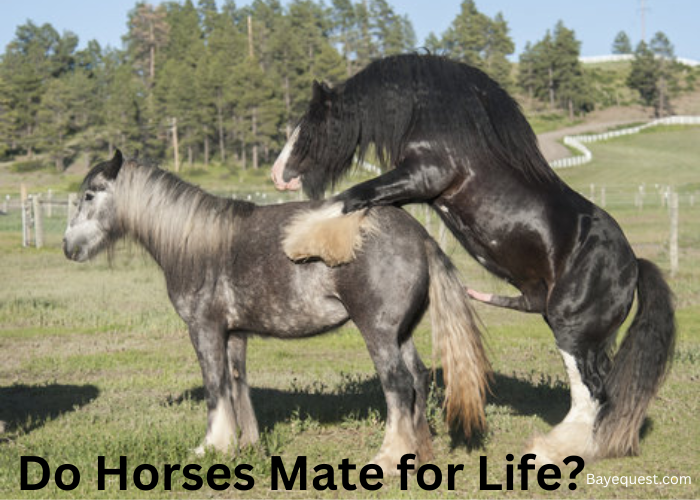In the equestrian realm, the pinto horse and paint horse stand out for their stunning patterns.
But what sets these beauties apart, and are they as different as their names suggest? In our exploration, we’ll delve into the intricate world of these captivating creatures.
We’ll uncover the mysteries behind their coats and unravel the stories that make them beloved among horse enthusiasts. Join us in this blog, “Pinto horse vs paint”, as we compare and contrast these two breeds.
What’s the Difference Between a Paint and a Pinto?
The main difference between a Paint and a Pinto lies in their breed and registration. Paint horses are a specific breed with their own registry, while pinto is a term used to describe horses with certain coat patterns. In short, while all Paint horses are Pintos because of their coat patterns, not all Pintos are Paints.
What is a Pinto Horse?
A Pinto is a type of horse that has colorful coat patterns. Pintos can have patches of white combined with any other color, such as black, bay, or chestnut.
These striking patterns make Pintos stand out in a crowd and are highly prized for their unique and eye-catching appearance.
What qualifies a horse as a Pinto?
A horse is classified as a Pinto based on its coat color and pattern.
The Pinto Horse Association (PtHA) defines a Pinto as a horse with a coat color that consists of large patches of white combined with any other color. These patches can be irregular in shape and can appear anywhere on the horse’s body.
Additionally, there are specific requirements for the amount of white on a Pinto horse. The PtHA requires at least 10 square inches of white for horses over 14 hands in height and at least 8 square inches for horses under 14 hands.
This ensures that Pintos have a significant amount of white in their coat to be considered part of the breed.
In terms of conformation, Pinto horses should exhibit typical horse proportions and characteristics. While there are no strict conformation standards for Pintos, they are generally expected to have a balanced build.
What is a Paint Horse?
A Paint Horse is a breed of horse with colorful coat pattern. Paint Horses have a combination of white and any other coat color, such as black, bay, or chestnut.
The distinctive coat pattern of Paint Horses can be either Tobiano, Overo, or Tovero, each with its own unique characteristics. Paint Horses are versatile and are often used in a variety of equestrian disciplines.
What qualifies a horse as a paint?
A horse is considered a Paint based on its coat color and pattern.
The American Paint Horse Association (APHA) defines a Paint as a horse with a combination of white and any other coat color, such as black, bay, or chestnut. This distinctive coat pattern can be either Tobiano, Overo, or Tovero, each with its own unique characteristics.
In terms of color requirements, the APHA has specific guidelines for the amount of white on a Paint horse.
For example, Tobiano Paints have white legs and white across the back between the withers and the tail. Overo Paints often have more scattered, irregular white markings. Tovero Paints, on the other hand, have a mix of both Tobiano and Overo patterns.
Also, paint horses are expected to exhibit typical horse conformation and proportions. While there are no strict conformation standards for Paints, they are generally expected to have a balanced build with well-defined muscling.
Pinto Horse Vs Paint: Head-to-Head Comparison
Pinto Vs Paint Horse: Origin
The Pinto horse and the Paint horse both have unique origins that trace back to different parts of the world.
The Pinto horse’s history can be linked to ancient cultures, where colorful horses were often depicted in art and mythology. These horses were valued for their beauty and were often used by royalty and nobility.
On the other hand, the Paint horse has a more recent origin, dating back to the horses brought to the Americas by Spanish explorers. These horses were bred with local Native American horses.
Despite their different origins, both the Pinto horse and the Paint horse share a common thread in their history. They were both prized for their unique coat patterns and were often considered symbols of status and prestige.
Today, both breeds are beloved for their beauty and versatility.
Paint Vs Pinto Horses: Breed and Bloodlines
The Pinto horse and the Paint horse are often confused, but they have distinct differences in their breed and bloodlines.
The Pinto horse is not a breed but a color pattern found in various breeds. These include the American Paint Horse, the American Quarter Horse, and the Arabian Horse breed.
Pintos can be found in many different breeds, which contributes to their diverse characteristics and temperaments.
In contrast, the Paint horse is a specific breed with its own registry, the American Paint Horse Association (APHA). Paint horses must meet specific coat color and pattern requirements to be registered with the APHA.
They have a combination of white and any other coat color, such as black, bay, or chestnut, in distinct patterns like Tobiano, Overo, or Tovero.
Interesting read: Chestnut Horse Vs Sorrel Horse.
Pinto Horse Vs Paint: Coat patterns
The coat patterns of the Pinto horse and the Paint horse are visually striking but differ in their specific characteristics.
Pinto horses can have various coat patterns, including Tobiano, Overo, and Tovero. Tobiano Pintos have white legs and white across the back, while Overo Pintos often have irregular white markings with a more scattered appearance. Tovero Pintos exhibit a mix of both Tobiano and Overo patterns, with characteristics of both.
Paint horses, on the other hand, have specific coat pattern. Paint horses must have a combination of white and any other coat color, such as black, bay, or chestnut, in distinct patterns.
These patterns can be Tobiano, Overo, or a combination of both known as Tovero. Each pattern has its own unique characteristics, such as the location and shape of the white markings on the horse’s body.
Despite these differences, both Pinto and Paint horses have beautiful and eye-catching patterns.
Paint Horse Vs Pinto Horse: Appearance
Both the Pinto horse and the Paint horse have striking looks, but there are some key differences between the two breeds.
Pinto horses can come in a variety of breeds, which means they can vary greatly in size, build, and conformation. This diversity gives Pintos a unique and individual appearance.
In contrast, Paint horses are a specific breed with distinct conformational characteristics. Paint horses are well-muscled and balanced in build, with a pleasing overall appearance.
They are known for their strong legs and sturdy bodies, which make them well-suited for a variety of riding disciplines.
Overall, both Pinto and Paint horses are beautiful and have unique coat patterns.
Pinto Horse Vs Paint Horse: Skin color
Pinto and Paint horses’ colors can vary. The underlying coat color determines the skin color of a Pinto or Paint horse.
For example, a horse with a black coat will usually have black skin, while a horse with a chestnut coat will have pink skin. (Read also: Black Horses Breed.)
One key difference between Pinto and Paint horses is that Paint horses often have pink skin under their white patches. This is because the gene that causes the white coat pattern in Paint horses can also affect the color of their skin.
In contrast, Pinto horses can have a wide range of skin colors, depending on their coat color. Pintos with dark coats may have darker skin, while those with lighter coats may have lighter skin. The skin color of a Pinto horse is usually more closely related to the underlying coat color than to the white patches on their coat.
Paint Horse Vs Pinto Horse: Conformation
Pinto horses, being a color pattern rather than a breed, can vary widely in conformation depending on their underlying breed. This means that Pintos can exhibit a range of body types and builds, from stocky and muscular to slender and refined.
On the other hand, Paint horses, as a specific breed, have more uniform conformational characteristics. Paint horses are known for their balanced build, strong legs, and sturdy bodies.
They have well-defined muscling and a pleasing overall appearance, making them well-suited for a variety of riding disciplines.
One of the key differences in conformation between Pinto and Paint horses is in their body proportions. Paint horses are bred to have specific conformational traits, such as a strong, well-arched neck, a short back, and a deep chest.
Pinto horses, on the other hand, can vary more in body type and may not exhibit the same level of uniformity in conformation as Paint horses.
Read also: Dun Vs Buckskin Horses.
Comparison Chart: Pinto Horse Vs Paint
| Aspect | Pinto Horse | Paint Horse |
| Breed status | Not a breed, a color pattern found in various breeds | A specific breed with its own registry |
| Coat patterns | Tobiano, Overo, Tovero | Tobiano, Overo, Tovero |
| Color requirements | Various, based on underlying breed | Specific requirements set by APHA, combination of white and another color |
| Conformation | Varies widely depending on underlying breed | More uniform, balanced build, with specific conformational standards |
| Skin color | Varied, typically related to underlying coat color | Pink skin under white patches due to gene affecting coat and skin color |
| Appearance | Diverse due to various underlying breeds | More uniform appearance within breed due to specific coat pattern requirements |
| History | Ancient cultures, valued for beauty and used by royalty | Originates from Spanish explorers in the Americas, bred with Native American horses |
| Registry | No specific registry for Pinto horses | American Paint Horse Association (APHA) registry for Paint horses |
| Use | Versatile | Versatile, used in various disciplines |
Different Types of Pinto Markings
1. Overo. Overo is a type of Pinto marking where the white patches are irregular and scattered across the horse’s body. The color usually “overflows” the white patches, creating a jagged or rough edge between the colored and white areas.
2. Tobiano. Tobiano is another Pinto marking characterized by white patches that are regular and usually cross the horse’s back between the withers and the tail. The legs are often white, and the head is dark, with the white extending down the neck and chest.
3. Tovero. Tovero is a combination of Tobiano and Overo markings. Tovero horses have a dark head, one or both eyes may be blue, and the white typically crosses the back and spreads up the neck.
4. Sabino. Sabino markings are characterized by high white markings, often with roaning or speckling on the edges of the white patches. Sabino horses can have extensive white markings that give them a “lacy” or “roan” appearance. (See also: What color is a roan horse?)
5. Splashed white. Splashed white markings are wide, even white and are usually on the legs and extend upward. The markings can give the appearance of the horse being “dipped” in white paint.
6. Frame overo. Frame overo is a specific type of Overo marking where the white frames the horse’s body, often with a dark patch over the back and hips. The legs are usually dark, and the head is marked with white.
7. Dominant white. This is a rare type of white marking that covers the entire body of the horse, leaving only the eyes and other small areas colored. Dominant white horses are often mistaken for albino, but they have pigment in their skin and eyes.
Interesting read: Paint Horse Average Cost.
Pinto Versus Paint Horse: FAQs
Is Pinto Horse the same as Paint?
No, a Pinto horse and a Paint horse are not the same. While both can have similar coat patterns with large patches of white and other colors, the main difference lies in their breed and registration. Paint horses are a specific breed with their own registry while Pinto is not a breed but a color pattern that can occur in various breeds.
Are all Paint Horse Pinto?
Yes, all Paint horses are considered Pinto because of their distinctive white and colored coat patterns. However, not all Pinto horses are Paints since the Pinto pattern can occur in many different breeds.
Can a horse be both a Paint and a Pinto?
Yes, a horse can be both a Paint and a Pinto. If a horse has the specific coat pattern and also meets the breed and ancestry requirements of the APHA, it can be registered as a Paint. At the same time, it can also be registered as a Pinto with the Pinto Horse Association of America based on its coat pattern.
Interesting read: Face and Leg Horse Markings.
Difference Between Paint and Pinto Horses: Conclusion
In the end, the debate between Pinto and Paint horses is more than just about spots and colors. It’s a fascinating journey into the world of horse breeds and their unique traits.
Both Pintos and Paints have their own charm and beauty, each telling a different story. So, whether you’re drawn to the Pinto’s diverse patterns or the Paint’s rich heritage, remember that each horse is a masterpiece in its own right.
So, saddle up and enjoy the ride, because in the world of horses, every spot and every color has its own tale to tell.








